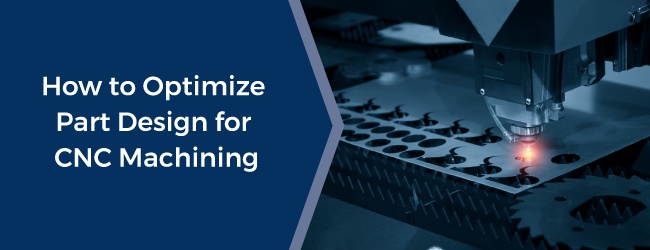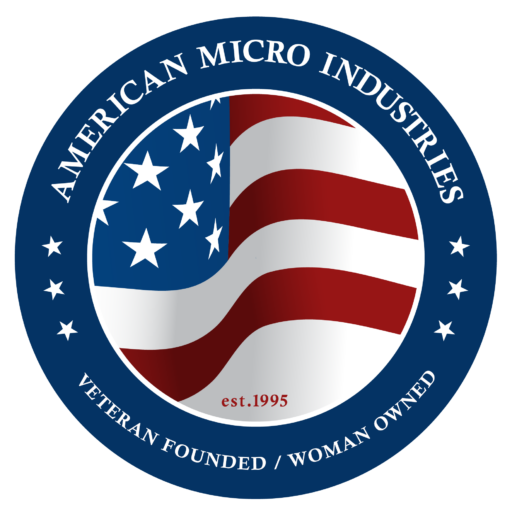
CNC machining is an effective manufacturing process that uses computer-controlled cutting tools to transform digital models into precise physical components. This technique offers accuracy, repeatability and versatility from prototypes to large-scale production.
Effective part design is essential for maximizing CNC machining capabilities and productivity. It streamlines the manufacturing process, enhances component performance and minimizes production costs. This guide explores key design considerations for CNC machining that facilitate optimal results.
CNC Design Guidelines and Restrictions
Designing for CNC machining demands awareness of machining constraints, tool limitations and process variability. CNC milling and turning remove excess material from a workpiece using rotational tools. Each of these machining methods has unique strengths and weaknesses.
Here are some recommendations to achieve the best results using CNC milling:
- Design smooth internal edges: When designing inner edges, the recommended vertical corner radius is one-third of the cavity depth or greater. Using corner radii slightly higher than the recommended amount enables you to cut along a circular path, rather than a 90-degree angle, which creates a surface finish that’s of a higher quality. If you need a 90-degree angle, use a T-bone undercut rather than decreasing the corner radius. The recommended floor radius is 0.5 millimeters, 1 millimeter or no radius, though any radius is technically feasible.
- Avoid deep cavities and pockets: The recommended depth of any cavity in your design is four times its width, as end mill tools have a limit to their cutting length. This limit is typically three to four times the diameter of the tool. If you need larger depths for design, you can use variable cavity depth. It is possible to have a 30:1 ratio for tool diameter to cavity depth when using a specialized tool.
- Maintain proper wall thickness: Keep walls sufficiently thick to avoid vibration, warping and reduced accuracy. Use thicknesses of at least 0.8 millimeters for metals and 1.5 millimeters for plastics, though 0.5 millimeters for metals and 1 millimeter for plastics are still technically feasible.
- Consider tool geometry: The majority of CNC cutting tools are cylindrically shaped and have a restricted cutting length. As these tools remove materials from the workpiece, they transfer their geometry to the part they are machining. The internal corners of a piece, for example, invariably have a radius. This is true even if you machine them with an extremely small cutting tool.
The following are some best practices for CNC turning:
- Use symmetrical designs: Design features symmetrically around the axis of rotation. Symmetry simplifies machining and improves accuracy.
- Maintain a practical length-to-diameter ratio: Keep the length of your workpiece less than eight times its diameter. Longer, thinner parts tend to vibrate or bend during machining, affecting accuracy.
Ensuring Good Tool Access and Simple Part Designs
Tool access refers to the cutting tool’s ability to easily reach and machine all parts of your design. Better access results in quicker machining, lower costs and higher-quality parts. To ensure good tool access:
- Prioritize functionality: Avoid unnecessary complexities or decorative details that do not add functional value. Simple shapes can be machined quickly, affordably and accurately.
- Provide clear drawings and specifications: Include technical drawings indicating essential features, dimensions and tolerances. Clear specifications help machinists understand precisely what’s required, ensuring accurate and high-quality parts.
- Implement reasonable tolerances: Apply tight tolerances when absolutely necessary. While tighter tolerances can improve part accuracy, they also increase costs due to additional machining time and inspection requirements.
- Avoid minute features: Design features larger than 2.5 millimeters if possible. Features below this threshold often require specialized micro-tools, which extend lead times and increase cost.
CNC Material Considerations
Different materials respond uniquely to the CNC machining process, influencing cost, cycle time, tool selection and how well the part performs in its final application.
The right material will depend on the part’s functional requirements, environmental conditions and the overall cost constraints of the project. The most commonly machined materials are metals and plastics:
- Metals: Metals like aluminum offer lightweight and high machinability, suitable for aerospace and automotive components. Steel alloys, including stainless and carbon steel, provide exceptional strength and durability for structural or high-stress applications. Brass is favored for decorative elements due to its attractive finish and machinability.
- Plastics: Engineering plastics like polyether ether ketone (PEEK) and acetal (Delrin®) deliver excellent machinability and chemical resistance, ideal for medical and electronics applications. Acrylics and polycarbonates provide superior optical clarity for transparent or semi-transparent parts. However, dimensional stability under heat and stress can be a limitation for many plastics.
Thoughtful material considerations result in optimized, reliable and cost-efficient components. Some important elements to keep in mind include:
- Machinability and cost: Softer metals such as aluminum are easier and faster to machine, reducing lead times and production costs. In contrast, harder metals like stainless steel offer durability but require longer machining cycles, increasing overall expenses.
- Thermal properties: Materials with high heat resistance, such as stainless steel or certain composites, are ideal for parts exposed to high temperatures.
- Chemical resistance: For parts in aggressive environments, materials like brass, steel alloys or certain plastics such as Teflon® (PTFE) offer excellent chemical resistance, prolonging the part’s lifespan.
- Weight and strength: Material choice also impacts the final part’s strength-to-weight ratio. For instance, aluminum, titanium and certain plastics offer a high strength-to-weight ratio, ideal for medical, aerospace and automotive applications.
Optimizing CNC Design for Manufacturability and Cost Efficiency
Optimizing CNC machining part design for manufacturability shortens lead times, lowers production expenses and boosts part reliability.
Tooling is a major cost factor in any CNC job. Designing features that align with standard drill sizes, thread pitches and cutter diameters reduces the need for custom tooling and rework. Here’s how to make your design more tool-friendly:
- When designing your part, use standard drill sizes to determine the diameter of the holes and aim for a maximum hole depth of four times the nominal diameter. Standard sizing improves repeatability and accuracy and prevents the need for specialized tooling.
- Set thread depths to one-and-a-half to three times the nominal diameter for stronger connections without over-machining.
Every time you need to reposition a part during machining, production time increases, and positional accuracy can shift. Parts that require more than three or four setups may require redesigns. Limiting setups promotes cost efficiency and reduces variability in finished parts. Here are some design approaches to minimize setups:
- Group features so they’re accessible from a single orientation.
- If your design has complex shapes, consider five-axis machining, which allows greater tool flexibility and fewer manual setups.
- Keep critical tolerances on features that can be machined together.
Prototyping and Low-Volume Production With CNC Machining
CNC machining is highly effective for prototyping and low-volume production, offering the flexibility and precision needed to create high-quality parts. CNC machining offers several advantages when producing prototypes or low-volume parts:
- Rapid iteration: CNC machining allows engineers to adjust part designs in near real time.
- Cost-effectiveness: CNC machining is often more cost-effective than injection molding or die-casting for low-volume runs, especially when considering the upfront costs of creating molds or tooling.
- High precision and quality: CNC machines provide tight tolerances and high-quality finishes for small and large batches.
- Short lead times: CNC machining expedites manufacturing, especially for straightforward geometries.
Additional Tips and General Rules to Follow
The most valuable lessons in design for CNC machining come from the shop floor. Experienced machinists and engineers often develop practical techniques that save time, improve finish quality and solve common design bottlenecks. Some valuable insights include:
- Collaborate with your machining partner: Regularly communicating with your CNC machining partner allows you to discuss potential design and material issues, enabling the final product to meet expectations without unnecessary delays or costs.
- Practice effective fixture design: Experienced machinists recommend designing simple and effective fixtures with easy tool access in mind. Planning fixture alignment early in the development process can save hours in setup time, especially when tight tolerances or multi-sided access are needed.
- Use tools efficiently: Selecting the largest feasible tool diameter and shortest tool length reduces vibration and increases accuracy.
- Make adjustments: Minor adjustments — like increasing internal radii slightly beyond standard recommendations — can substantially improve surface finishes and shorten machining times.
Keep these general rules in mind when completing your part design for CNC machining:
- Design your parts so that tools of the largest diameters possible can machine them.
- Add large fillets of at least a third the size of the cavity depth to the interior vertical corners.
- Don’t design cavities that are more than four times deeper than their width.
- Make sure the features of the design align with one of the six principal directions. If this is not feasible, you can use five-axis CNC machining.
- If your design includes specifications for things like tolerances, threads and surface finish, include a technical drawing with your design.
Contact American Micro Industries for Expert CNC Machining Services
With the right design practices and an understanding of CNC machining capabilities, you can ensure your projects are successful, efficient and cost-effective. At American Micro Industries, we specialize in CNC machining for industries ranging from aerospace and marine to defense and medical. Our team works directly with manufacturers, engineers and product teams to help transform solid models into functional, reliable components accurately and consistently.
We offer comprehensive CNC services, including turning, milling and foam machining. We also work with numerous materials, including metals, specialty plastics and dielectric materials. Whether building a prototype or looking for large-scale production, we support your goals with deep expertise and personalized service.
Request a free quote today to get started.


